Jayca Pike (Director of Client Services, EmberTribe) and Halley Gray (Director of Marketing, EmberTribe) joined Nick Bélanger (Agency Partnerships, Clearco) to discuss ways to optimize your sales funnel and how to test to get it right!
Get our insights on:
🚀Experiment ideas and which KPIs you should measure.
🚀Understanding the conversion rates on your funnel by each channel.
🚀Why more traffic will not improve a funnel that has low conversion rates.
🚀How to compare your results to the industry standards (and where to find available tools).
Transcript:
Nick Bélanger, Clearco:
Welcome to Partner Pulse! Excited to get going with you two today. Today our topic is sales funnels, all things, sales funnels, everyone's favorite topic. I'm happy to be nerding out today with Halley and Jayca from EmberTribe. I'm going to get really into, well, we'll start high level, but excited to get kind of into the nitty gritty with you two today. To kick things off though, I'll just quickly introduce myself and then I'll throw it over to you to, if you could do the same. And then we'll kick off with a couple of questions that I got but also excited to answer some questions from the audience as people join into the live today. My name is Nick. I work at Clearco I'm on the agency partnership team which means I work closely with our brands that we work with at Clearco to connect them with our best fit agencies, to help them reach kind of like the next level of growth in their lifecycle as a brand. Embertribe, the two folks that I got on the call today are very strong partners with us on the agency side.
Jayca Pike, Director of Client Services:
Sure thing. Hi, I'm Jayca. I'm the Director of Client Services over here at EmberTribe, which means I get to see pretty much the ins and outs and the overall strategies of all of our amazing clients. A lot of which are e-commerce, but not all. So I have a, I get to have a very wide lens and get to view a lot of different tests and a lot of different strategies towards success. So I'm really lucky to be where I am and happy to be talking to you guys today.
Halley Gray, Director of Marketing:
Hello, I'm Halley Gray from EmberTribe. I'm super excited to be here. I'm Director of Marketing, and I cannot wait to nerd out about marketing funnels with you, Nick. This is going to be super fun, especially because Black Friday Cyber Monday is coming up at the time of recording this. So it's a really good thing to get taken care of right now while we're right now, literally right now, while we're talking. So let's get the homework started. I think we should jump right in, right.
Nick Bélanger, Clearco:
I'm going to start at the very, very top and see if you guys can maybe just add some definition of what does a sales funnel mean to you folks inside of EmberTribe, and why is one important? Why should brands have a sales funnel? And then even when you're thinking about a sales funnel, what are then the important kind of metrics to track throughout? So it was kind of like a triple headed question but I'll throw it over to you, Jayca. See if you can start to kind of unwind this for the audience.
Jayca Pike, Director of Client Services (03:13):
Yeah, no problem at all. I can sort of talk about it in a little bit of the way that I speak about it with clients often who are onboarding with us, right? So I start with, listen, the ads have what I'm talking about. Like the sales funnel I'm like the ads have one job. That job is to get people to the landing page. So for e-commerce sense of product page, right? So we judge that ad on its ability to get people to the landing page in a cost-effective way. So that's going to be CTR and somewhat CPC or CPM. And then the landing page has one job. That landing page's job is to get people to add to cart or to get people to sign up as a lead, right? So that's its only thing that it's supposed to do.
Jayca Pike, Director of Client Services (03:54):
So if people are bouncing out of that page right quick, if not very many people are taking the action, if not very many people for the volume of traffic we're sending to it or taking the action, then that landing page isn't doing its job or product page. Last but not least, when I think about a sales funnel, I'm thinking about that checkout, which again has one job. If your, the add to cart has a job to get people to initiate checkout, initiate checkout has a job to get people to purchase. So if we are seeing, for instance pack only like 25% of people who initiate checkout move forward to purchase, we're not looking way back up here at the ad. Like how can the ad solve that problem? We're looking down here like, okay do folks not understand what the shipping time is? Are they sticker shock that they didn't get, you know, a coupon in their email, something along those lines. So that's how I think about the sales funnel and how we sort of diagnose different issues. At the point where there is an issue versus just spray and pray, we can, we can hit a solution. How did I do on answering that? Nick? Did I go, did I go too high level for you there?
Nick Bélanger, Clearco (05:00):
I think that's great. I think generally the idea is like just that visualize like an old fashioned funnel that you'd see in your kitchen, right? Like triangle and there's drop-off at each one of the stages that you identified. Right. So it's, it seems to be that it's about understanding how to diagnose each of those levels in funnel. Is that right? Is that what you would say, Halley?
Halley Gray, Director of Marketing (05:26):
Yeah, definitely. So what I would say as well is that like a lot of people wrongly diagnosed or excuse like the ad saying, we need more clever ads or we need more sophisticated bidding strategies or iOS14 and Zuckerberg are against us, but like in a lot of cases, what happens is that people aren't looking at the holistic marketing picture, like the whole growth system and they're not seeing how all of these things work together. And so like Jayca was saying like, if you can't convert a visitor into a buyer, that's not necessarily an ad's fault, that's a funnel fault. So it's really important to think about these things and like really get strategic about your funnel and optimizing it for better results.
Nick Bélanger, Clearco (06:04):
Okay. And then I'd love to get your thoughts on like what makes a strong funnel thinking at the, from like the very top. Do you typically advise your clients, the brands that you work with to send traffic to a product page? Like you mentioned, like what are your thoughts on sending directly to a homepage versus a product page versus a collections page versus maybe like a standalone landing page? I'm curious how you guys advise on, on that front.
Jayca Pike, Director of Client Services (06:38):
So I would start with probably exactly what Halley would say as well. Test all of the above. Right? So test what happens when you send to a homepage versus a product page versus a collection page, generally, big fat, generally I find that a product page tends to perform the best out of those, but that is by no means universal. Halley, I know, even in your experience, you absolutely have a of times when you don't want to be sending people directly to a product page, not just because it isn't going to be the best converter, but because somebody needs a heck of a lot more education before they're ready for a product page maybe. Right. So I have that, right?
Halley Gray, Director of Marketing (07:18):
Yeah, definitely. I mean, I am a hundred percent behind product, like sending people directly to the product page. Especially if you have a product page that's like been optimized because you can AB test like one with a lot more information and a video versus one that just like just the information with no video.
Halley Gray, Director of Marketing (07:34):
There's a lot of different ways to see like how you can improve your most popular product pages. But like Jayca said, it really just comes down to testing, like where, where in the funnel do they need to go? Like at the top of the funnel, they might need to go to the homepage where it has a lot more education and then you might need to retarget them to then get them to go to our product page and then making sure that they, if they abandoned their cart, that they get retargeted again. So, you know, ads can support a funnels progress, but when you look at how you're sending traffic through and how it's dropping off, what we're really looking at is, okay, we have ads they're going through the whole funnel. The funnel is performing at this rate. And then like Jayca was saying, there's benchmarks for performance that we want to look at in terms of, okay, well, let drop off rate is so dramatically low. That that is really the biggest opportunity for growth. Not necessarily just optimizing ads. And so that's how we look at it in terms of improving our client's funnels.
Nick Bélanger, Clearco (08:29):
Cool. And when you guys are talking about like assessing the health of a funnel or understanding performance versus, you know, landing on any one of those pages that you mentioned, what are the key metrics then you're really looking at that are like the telltale signs of whether something is performing well or something needs attention.
Jayca Pike, Director of Client Services (08:52):
I think we're going to just continue this pattern, Halley, where I start and then I throw it over to you and you add supplemental stuff onto it. I will say that it's especially, especially in light of iOS 14, right? One of the most important things that we can do is set benchmarks outside of just what the platform is telling you. So if I'm looking at something like click through rates, right. I can't, I, I think that my best, my best estimates are comparing click-through rates from, you know, the exact same client or a series of clients who are in a similar situation, right? It's similar AOV, similar ad spend similar revenue, right. So how can I understand this performance as compared to a wider range of performances and not just against where this client has been previously, Clearco by the way is great for that.
Jayca Pike, Director of Client Services (09:48):
Right? So we can have a bunch of different things that we can benchmark. So if I'm thinking like conversion rate on a product page, right. I can look at that for a client. Who's got an AOV of $20 and be like, okay, you should be at least 5% conversion rate. If I have an AOV of $120 on another client that at least 5% isn't as valid, I'm seeing lots of successful stores with much lower conversion rates. It has to do with, you know, people's willingness to pull the trigger right away on a higher average order value. So some of the ones that we look at CTR, CPM, conversion rate, add to cart rate, add to cart to initiate checkout, initiate checkout to purchase, those are all valid things to look at. And we do we just have to be careful about looking at them in isolation, right?
Nick Bélanger, Clearco (10:45):
I'll step in for just a second there, because I think that's super important. What you mentioned that like all of this alphabet soup of these acronyms that we use, like the marketing jargon are important in and of themselves, but only in relation to other stores that are similar. Right. In terms of like, if it's an impulse purchase versus a very considered purchase, if the AOV is a lot higher, right. That you're not going to measure conversion rate to a store that has a $10 AOV product. Right. It's it won't be apples to apples. Super good point for doing that benchmarking and appreciate the plug to Clearco what Jayca is referencing there is inside of your Clearco dashboard, you're actually able to benchmark against the, you know, hundreds or tens of thousands of other stores in your vertical that have also connected with us. So it gives you a good sense of like where you sit relative to other stores that are similar to you. I'll throw it over to you, Halley, to kind of round that out, though, if you had some other thoughts on that.
Halley Gray, Director of Marketing (11:49):
Yeah. I mean, I think something thatJayca ended that is that your average order value your AOV is if it's higher, your funnel length. So the time it takes for someone to become a visitor on your site to becoming a buyer, usually increases as things get more expensive. Like you're not going to buy a $10,000, I don't know, wristwatch, if you have just like heard about them, it usually takes more education and it takes more retargeting and value setting and messaging and prep. Like it takes a lot more testing, especially with the way that Facebook has changed their attribution settings, like this all kind of works together to make sure that when we're looking at how your funnel is operating, we definitely need to be taking into consideration funnel length, like the time from seeing it to conversion. And that's something that really, a lot of people don't think about because they're like, oh, I've heard that other e-commerce stores take like seven days. And it's like, sure, buddy, but they're $30 products and you're selling a $300 product. So let's add some more time there to give people the chance to like, get to know you first, before jumping right in, because it's a bigger risk, bigger cost.
Nick Bélanger, Clearco (12:52):
Yeah. I think from there, this is a natural segue into a topic that like things seem to be pretty hot these days, like dealing with the changes on the iOS side and that no limited visibility that you have into the attribution window now. Right. And I'm curious to see how, or to hear a little bit more from you guys EmberTribe how you're addressing this and making sense out of sales funnels, performance based off of, you know, no longer having that longer click or view window to analyze on the, the traffic front.
Jayca Pike, Director of Client Services (13:35):
Okay. Yeah. So I can say again, this is highly, you know, dependent on you know, not highly dependent on clients, so it depends on client to client. So one of the things that I would say that we're encouraging the vast majority of our clients to do is to be in as many places as possible. Right. So one of the things that we know what happened is we lost attribution from the majority of iOS, iPhone users from an app, right? So we didn't lose attribution within the app though. So we can still retarget people really effectively if they engaged with an ad on Facebook or Instagram, or watched a video or shared it or made a comment, right? Same thing across all of the other apps, Pinterest or TikTok or Snapchat or wherever you want to go.
Jayca Pike, Director of Client Services (14:21):
So one of the things we're trying to encourage people to do is to touch people in on a whole bunch of different platforms so that we can continue to watch that journey as far as we can. Right. So if you lost them, you know, a couple days ago on Facebook, but you pick them up again on Pinterest and you pick them up again on Snapchat and then even better, please, please, please get people into your email and your text providers so that we can reach out to them for free. And we don't lose and there's no attribution loss, right? Like we can always retarget people, text some people. So those are the, those are some of the things that we're talking to people about. In order to just, I guess, kind of expand the sales funnel or expand our, our sort of definition of it.
Jayca Pike, Director of Client Services (15:01):
It's going to be difficult to, it's always been difficult to get people to, you know, purchase that first site. Right. But where we're losing folks both from an attribution standpoint where we're just looking at the revenue overall as growth, like, okay, if we're spending money on, as we see the revenue overall growing, but also where we're just losing the ability to actually touch people as reliably, as we used to, we have to open up the different places where we can touch them so that we can communicate with them, with them throughout the season and throughout their customer journey. So that's what I would say, Halley's more in the, in the day to day than I am. Do you have similar thoughts or different ones?
Halley Gray, Director of Marketing (15:42):
Yeah, definitely. I think when it comes to this sort of thing because most of the time I spend now in a longer funnel length, lead gen funnel.
Halley Gray, Director of Marketing (15:50):
But before that as well, we had a couple of a few clients that I was working on directly who had a higher AOV and higher average or value. And what I would say is there's, there are solutions out there. My favorite is Segmetrics for helping with attribution and seeing the client customer journey that's really helpful. Segmetrics has been able to kind of like drill down to ads and ad sets that generate sales, but outside of that seven day window attribution for Facebook as well as other platforms. So that's a great way to move forward if you want to and then what I would say as well is that leg was saying, like, if you can make sure that you are getting the most out of your retargeting channels, email, SMS messenger all of those things that's really helpful for, you know, working around that and making sure that that's not impacting your business as much as it could.
Nick Bélanger, Clearco (16:46):
Cool. So I like that going omni-channel is like part of the solution to dealing with some of these challenges. All right. Let's take a step back here now that everyone is, you know, on the same page as to what a sales funnel is, you have one, whether you like it or not. And now we know some of the key metrics that you're looking at when you're trying to assess the health of a sales channel or sales funnel rather. What do folks do with that data now that they're beginning to collect it and kind of inspect it, I guess it typically people talk about testing, like going hand in hand with understanding your sales funnel. I'm curious to understand how EmberTribe approaches testing and how do you think about it in terms of like running campaigns to an individual sales funnel and how do you, what are your, some of your, let's say favorite leavers to pull on, to increase performance at each one of those levels through the funnel?
Jayca Pike, Director of Client Services (17:52):
That's a lot of questions in one question. All right. So here we go. I'm going to, I'm going to start with some leaders, cause that was the last one. So all right. I love me and leader. And I was just rubbing my hands. That means good stuff is coming. All right. So if we're talking for instance, let's talk about that very first stage in that, in that sales funnel and that journey and in ad land, generally the lever that we're pulling is going to be ad creative, right? Copy makes a difference. Optimization makes a difference place, and it makes a difference. Headlights make a difference. All these things make a difference format. But generally creative is what hits people first and what can often be the largest needle mover in terms of ads, right? So in terms of getting people who are interested in your product to the product page, going to go with creative there if you're on your product page and you're having a lot of trouble getting people to add to cart, we have a couple different leavers we pull. I think that one of the
Nick Bélanger, Clearco (18:50):
Does that mean your advice is typically like let's go right to the top of the funnel and address the creative first because that'll have downstream effects through the entire funnel? Is that typically?
Jayca Pike, Director of Client Services (19:04):
Yeah, sure. Really good question. Really good clarification. If that's the problem, right? If you got 5% of people that you're targeting, clicking on your ads and bringing qualified traffic to your site, then getting people interested in getting people to your site, isn't the problem, right? So it, it wouldn't be where it starts. If we're having trouble getting qualified traffic to the site. And by qualified, I just mean people that are apt to purchase, right? People who have bought in on an ad that is a truthful representation of what you sell for a cost effective price, according to your budget and according to your cost, your margins, whatever. Then that's, if that's something that we're having trouble doing, then creative is the easiest thing to, or probably the most impactful lever to pull in order to get people into or to get those people to the site. But if you've got really engaging ads and people are really loving it and they're coming to the site and the ad CTR, isn't really a problem. Then the ad creative, isn't really a problem. You need to focus on what the problem actually is like where in that funnel is that hold up happening. Right. So not necessarily, I guess, is the answer to that question. Okay.
Nick Bélanger, Clearco (20:15):
Well yeah, that's, that's helpful. And so it's a matter of like, okay, where is the drop-off happening in the funnel? And then if creative is the area of like actually getting people into the sales funnel is problematic, then address that. I'm curious if you have I feel like this is a loaded question, but when you're playing with things like creative to make some of those changes, do you go directly for having like wildly different creatives to, to build out your split test? Or is it, you know, changing some colors here and there? Like, I'm curious, like what, what's your philosophy around that type of thing? And I can throw it over to Halley if you'd like, hello,
Halley Gray, Director of Marketing (21:07):
I'm team wildly different. What team are you on? Definitely team wildly different. I want people like, I want to be testing different messaging, different carousels, different creative UGC, single images. Like in the beginning, you just want to try as many different things as possible and whatever moves the bar forward or performs better than the others, then you can kind of iterate on it and then keep moving forward. But yeah, wildly different. I'm a hundred percent behind that. But the other thing too, it could be that like you, like, like Jayca was saying, is that when you're looking at it, and you're not just blaming ads because, you know, ads are only a small portion of it. Once you have enough traffic, you can figure out where the funnel drop is. You can figure out where the funnel is performing or not. Like maybe you've been sending more traffic, which is already like, knows about your product and these really jazzed about it, which is going to change your funnel performance.
Halley Gray, Director of Marketing (21:57):
When you add in cold traffic of people who are like, who are you? And why are you following me on Facebook? So a big challenge can be finding out like how that cold traffic performs, because you might've been using the wrong benchmark with warm traffic. And really like the places that we, the places that we see, the biggest drop offs are like, take a said, add to carts initiate checkout, and then purchase is where you're looking for. And then repeat purchases. So like a lot of this is done on your website and optimizing your website. A lot of it can be done in retargeting as well with your ads and your email and your SMS. And what you'll find is that when it comes to this there are usually key factors, key levers that you can pull that will offer you the best results.
Halley Gray, Director of Marketing (22:43):
Because I think of the day, if you're optimizing your website or your checkout process, or your site speed to be like, you know, quarter of a second faster, that's not going to be moving you forward. You know, that's not really a big impact that you can have. And so there's a certain point where when it comes to testing your funnel, you're going to have diminishing returns. So what you're trying to look for is one of the big growth opportunities inside of your funnel, where the big growth opportunities inside of your growth system, because when it comes to this, like this is all working together and, you know, specifics on how to get it improve. It are things that are really like, you know, at the end of the day, they don't seem that exciting, but it's like site speed. It's making sure your messaging matches on from your ad to your landing page, making sure your products have good videos and pictures of them, making sure that it's clear how to check out and your checkout process makes sense. So I can nerd out about this for ages, but is that the answer to your question, Nick?
Nick Bélanger, Clearco (23:42):
Like I earlier, there's all of these acronyms that we've listed and then understanding like the full, you know, top to bottom of your funnel. And I think a lot of people can get this kind of analysis paralysis of like, where do I begin? Right. Like what do I test first? How do I actually action on any of this? And I'm super happy that you went straight to like creative is gonna, you know, move the needle the most it's most, it's the most like likely culprit or opportunity to find improvement. And then it becomes the smaller stuff. Like, like you mentioned, like site speed is not a small thing. It's like huge, but you know, there's a hierarchy of things that you, you approach when you're, you're making these changes. But maybe speak to that a little bit. Like when you are executing, you know, you choose one of these variables to test in your sales funnel.
Nick Bélanger, Clearco (24:38):
Do you typically, and I guess, you know, I'm also on team like wildly different but does that mean changing all of like a number of different variables or do you like to isolate one variable or do you typically run a number of tests at once? Just curious if you can kind of, you know, show us a little bit of the EmberTribe playbook there. I think people would be curious to kind of learn more about what is the smartest way to efficiently capture this data to make some big decisions in terms of where they're moving their budgets.
Jayca Pike, Director of Client Services (25:12):
Yeah. I don't know if I feel like just opening up a playbook here, but no, I think it's a fairly tried and true set of strategies. I would, I would say first of all, if you're, if you're new to advertising or not sure where to start, you start at the place where there's the problem, right? So it started a place where there's the most friction, right? If you ha, if it takes your site a minute to load start, there don't run ads yet. Like that's, that's gotta get fixed. If people can't add to cart and checkout in lickety split time, like with PayPal and affirm and whatever else they want to be able to check out with, start there. Like that's not a test, right. That's one thing that I try to make sure clients understand, like fixing problems. Isn't a test, a test is people in an ad versus puppies. Right. And so
Nick Bélanger, Clearco (26:04):
I'm very happy that you said that because there's just some things that you should split test, like just do them, right. Make those improvements that doesn't require a split test for every single thing.
Jayca Pike, Director of Client Services (26:15):
A hundred percent. I think that, I think that that's a good that's. Let's just keep saying that I'm good. Shut up.
Nick Bélanger, Clearco (26:22):
We do got a question from the audience, so maybe I'll throw that at you guys. And then we can kind of jump back to some other things here, but how do you guys feel generally about buying followers for your Instagram account?
Halley Gray, Director of Marketing (26:39):
Halley. Halley, okay. Halley is going to take the tirade fine. I'm going to crush the dreams. Yeah. Thank you. I'm really excited. Also, I'm going to check out your lash lab after this. That sounds pretty amazing. But what I would say is that this is something that's not going to move the needle forward. It is definitely like an, it's a vanity number at the end of the day. It's going to be full of people who don't care. They're not interested. We can't like you can't do anything with that. Really. It's just showing people that you are you've got followers. So what I would say is if you're going to buy followers, take that, that budget and put it into ads, put it into something that generates traffic with actual genuine people who are interested in your product. And I mean, if you're talking about lash lab, you're talking about people who want amazing lashes, I assume.
Halley Gray, Director of Marketing (27:29):
And there's a lot of people out there like that. So think about blog posts, think about organic social media, like, you know, organic social media, it's a little slower, but at the end of the day, you're going to be able to get more authentic traffic coming your way, which is really what you want when you're a business. You're an e-commerce owner. And also it's going to help you a lot because it's, you're going to be more credible. If you have great content on your organic social channels and you know, your website than if you just try buying followers and not having that sort of investment into your like product images, your, your website, et cetera, Jayca, anything to share. I'm just saying, if, you know, if you have money to buy some followers, I would suggest putting it into advertising, you know? Well, I think that, I think that will get some more people to your site. That's generally been my experience.
Nick Bélanger, Clearco (28:18):
I a thousand percent agree. All right. What I was going to say here is that let's just kind of try to summarize where we are right now. We understand what a sales funnel is. We understand that there's different stages and number of different metrics that are key to track and understand which of, you know, are kind of like the go-to tests to implement, to try to improve some of these metrics and the results that we're seeing inside of our sales funnel. How now, like what maybe some of those split tests in mind, let's say around creative or headlines on the page and things like that. What is the next step when you actually want to begin running a split test, you know, against a number of different these elements in your sales funnel, and what is your process around making decisions in terms of yes. A is a winner versus a variant B.
Jayca Pike, Director of Client Services (29:12):
Yeah, I can Halley, I'll take that from the ads perspective and you want to take it from the page perspective afterwards, does that work for you? Sweet deal. So generally if you're trying to test, like, let's say you fixed all the broken stuff on your page and your site's feed and your checkout process, all that, it's all fixed. It's, nothing's a red flag any longer, you want to start testing, what kind of ads work for you generally? We like to say that you have, I mean, absolutely start with a goal in mind, start with a realistic, reasonable goal. I want to get to a 2% CTR on these ads, or I want to get to a $10 CPM cost per mil. That's how much the cost to reach a thousand people in that audience, in that audience. Right. So start with a goal in mind.
Jayca Pike, Director of Client Services (29:53):
I would say if you want to go buy a time base, give yourself two weeks to look and see how that performs over two sets of weekdays and two sets of weekends. Or you could give, I would say, and not necessarily, or give yourselves, you know, five to 10,000 impressions on that ads on those, you know, split ads before you would decide to make a decision, your budget can vastly affect this, right? Maybe you have a kind of budget where you're getting $30,000. I mean, excuse me, 30,000 impressions in a day. That's fine too, but you need to allow for the time as well. So impressions isn't by itself. A great measure time is by itself. Isn't a great measure. The both together will give you the data you want that would be reliable to work with from an ads perspective.
Halley Gray, Director of Marketing (30:40):
Yeah, I agree. I mean, really what you're looking to do is once you've driven traffic to a page, that's when you can start to analyze this performance, but until then, you don't know. So the other thing as well is that like the source that you're sending it from, it could be, you know, will very differently it's performance between like tic-tac and Facebook and Snapchat. So thinking about things like that and how comparing them is a good thing to look at in terms of analyzing a page's performance site speed, always a key one, looking at how people move through the funnel from different channel sources is a good one. But basically you're just looking to see that if they're taking the next step to the next step of the funnel, because basically when you're optimizing a funnel, you're just trying to unblock it. Like there's like five dams and you're just trying to lift each dam. So like, you can get the water through. And like the first one, this is a really not like a very technical, mechanical engineering analogy, but basically you're just trying to get that water pushed through and you want to like go one at a time. And so the next step is to see, like, can you get them to the next step? Great. What's it going to take it to the, go to the next step as well? And so really what you're looking to do is just improve the existing numbers that you have.
Nick Bélanger, Clearco (31:46):
Yup. Yup. I like that. Where can you remove friction along the path? Right.
Halley Gray, Director of Marketing (31:52):
And if you can take down the number of steps too, that's a good way to test as well.
Nick Bélanger, Clearco (31:57):
One quick kind of follow up question on what you mentioned there, Halley is, is it often the case that you'll see different performance on the same sales funnel through different channels?
Halley Gray, Director of Marketing (32:10):
Yeah, that's what I've found in my accounts is that you'll have different performance for like, you might have a higher ads current rate if the traffic's coming from like Pinterest. Whereas if it's coming from Facebook, you have a higher drop off in the initiate checkout. Whereas from like, TikTok, you might have a higher drop off from the platform to the landing page. So yeah, it does actually differ a bit between channels. It definitely gives you a wider perspective on higher funnel performs, but then I would try to look like, can you optimize for that specific channel? Are you getting enough traffic to actually have like meaningful insights from a specific channel to like even bother optimizing it? Because at the end of the day, you want to look for like the biggest factor to move, to create the biggest positive change. Not just tiny things all the time, because that will take up a lot of time and a lot of testing that won't get you the bigger results that you're looking for.
Nick Bélanger, Clearco (33:03):
Yeah. Yeah. That's key. I guess, okay. So where are we now? So I think we've, we've run a successful test. We were analyzing all of our metrics. We finally understand that funnel a is performing better than funnel B in our tests. What now? What should the brand or the founder or the media buyer kind of do at that stage? Is it game over? Do they just celebrate themselves on the back?
Jayca Pike, Director of Client Services (33:29):
You are welcome to celebrate and pat yourselves on the back turn off the other tests that you had about the one thing that you were testing copies versus humans, or this kind of funnel versus this is going to turn that bad boy off, put the winner into practice and then hypothesize on the next test so that you can start building on better results, right? You pick the next place where there's a dam or friction as Halley was saying. And go ahead and start chopping away at the dam. The metaphor is going to get real messed up in a second here, but that's what we do here is we say, you know, great, we found a winner. We're going to put some money behind it and keep it where it is, and then go try and be there. I like
Nick Bélanger, Clearco (34:07):
That EmberTribe is in the business of chopping down dams,
Jayca Pike, Director of Client Services (34:13):
Spread that far and wide highly hear that. That's a good one. Yeah.
Nick Bélanger, Clearco (34:19):
Okay. That's essentially what I wanted to hear that there's like, there's another test that will backfill, you know, there's always a test in the queue. Is that typically how you approach things, Halley? Yeah,
Halley Gray, Director of Marketing (34:29):
I would say as well, like, like Jayca is saying, you're probably gonna start with ads because that's your traffic generator and then you're going to move on to your website. Then you're going to move on to your other retargeting channels, like email, SMS messenger. Anything you wanna think about is offers and products and looking at how those products work together and those offers work together. And if you can optimize an offer or a product because sometimes as Jigga knows, like a client will come in wanting to do like wanting to have a specific product being the, I dunno, the golden child, but actually it might be like a bundle or a different product that actually moves them forward to when it comes to their profit margins or the conversion rate of that product. So really having an open mind when it comes to the assumptions you have around your funnel around your business is really useful because once you've tested it, you can actually find out what works, what doesn't. But if you already come in assuming certain things work without any data to back it, then it ends up skewing your results.
Nick Bélanger, Clearco (35:24):
I'm so happy you said that because it's easy to kind of fiddle around the margins around all of these tiny little optimizations when the real problem is the offer. Right? And like, that should be kind of like top of mind when you're making a lot of these decisions around what to test next. Thank you for taking the time to kind of nerd out about all this stuff with me. This is really fun. Thanks for having us. We'll have been learning lots. But if people want to learn more about EmberTribe or how to build a really good sales funnel, where should we send people?
Halley Gray, Director of Marketing (36:03):
Definitely have them talk to one of our growth experts. You can book a free discovery call and we can take a look at this stuff for you. Definitely answer these questions. But at the end of the day, just coming, visit us over at EmberTribe.com and nerd out with us on all of this cool stuff about digital marketing and growth systems. Are we all nerds? I think we all are nerds. You're a nerd.
Nick Bélanger, Clearco (36:30):
I'm proud to associate myself with nerds. Okay, cool. Thanks for being on Partner Pulse today. We'll talk to you soon.


-AK-148968-preview.png?width=842&height=310&name=1.01-1x1px-Embertribe-(Client-Services)-AK-148968-preview.png)


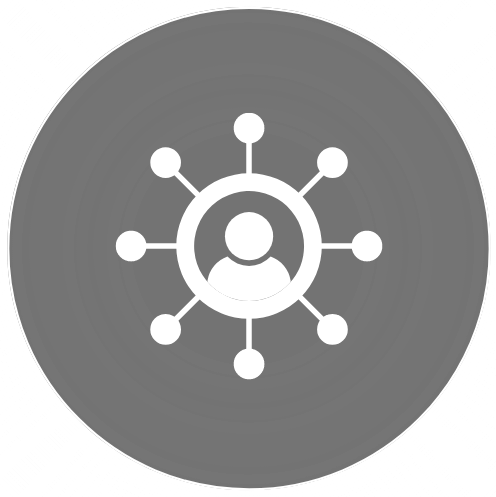
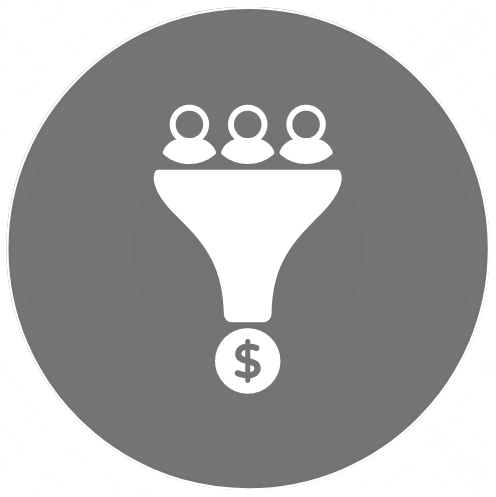


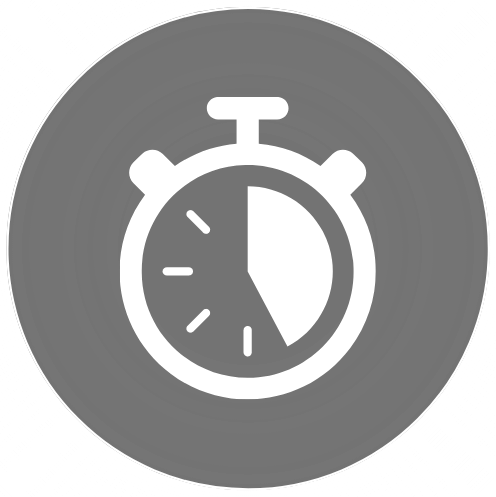

.png?width=810&height=810&name=TJ%20Jones%20-%20%20CoFounder%20EmberTribe%20(1).png)
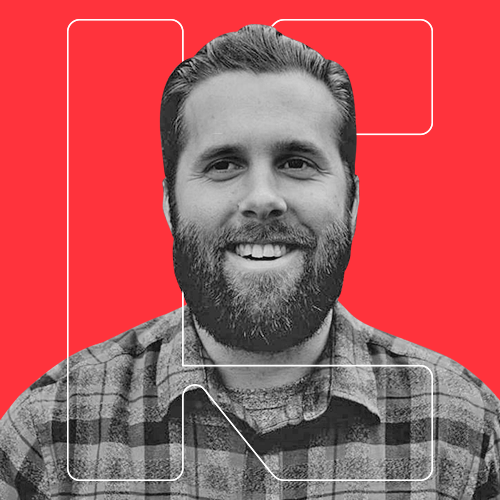
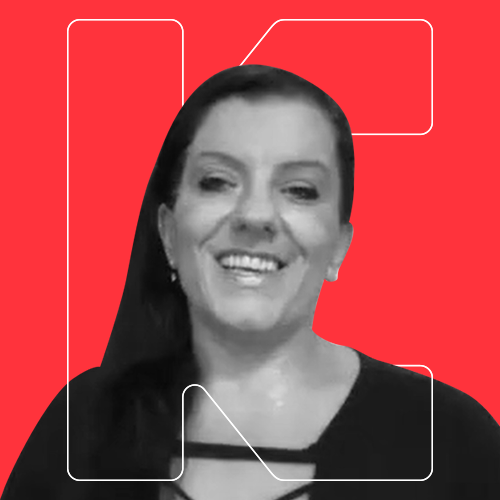
%20-%20500x500%20-%20SP%20-%2045.01.png)
%20-%20500x500%20-%20SP%20-%2049.01.png)
%20-%20500x500%20-%20SP%20-%2057.01.png)
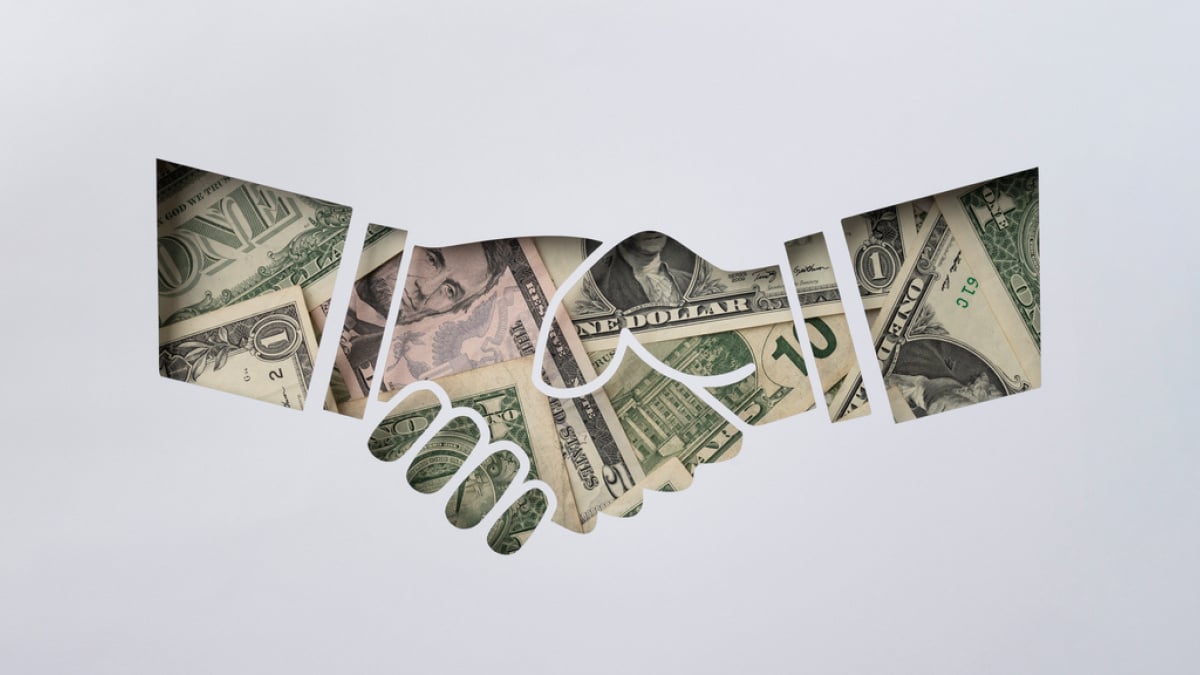
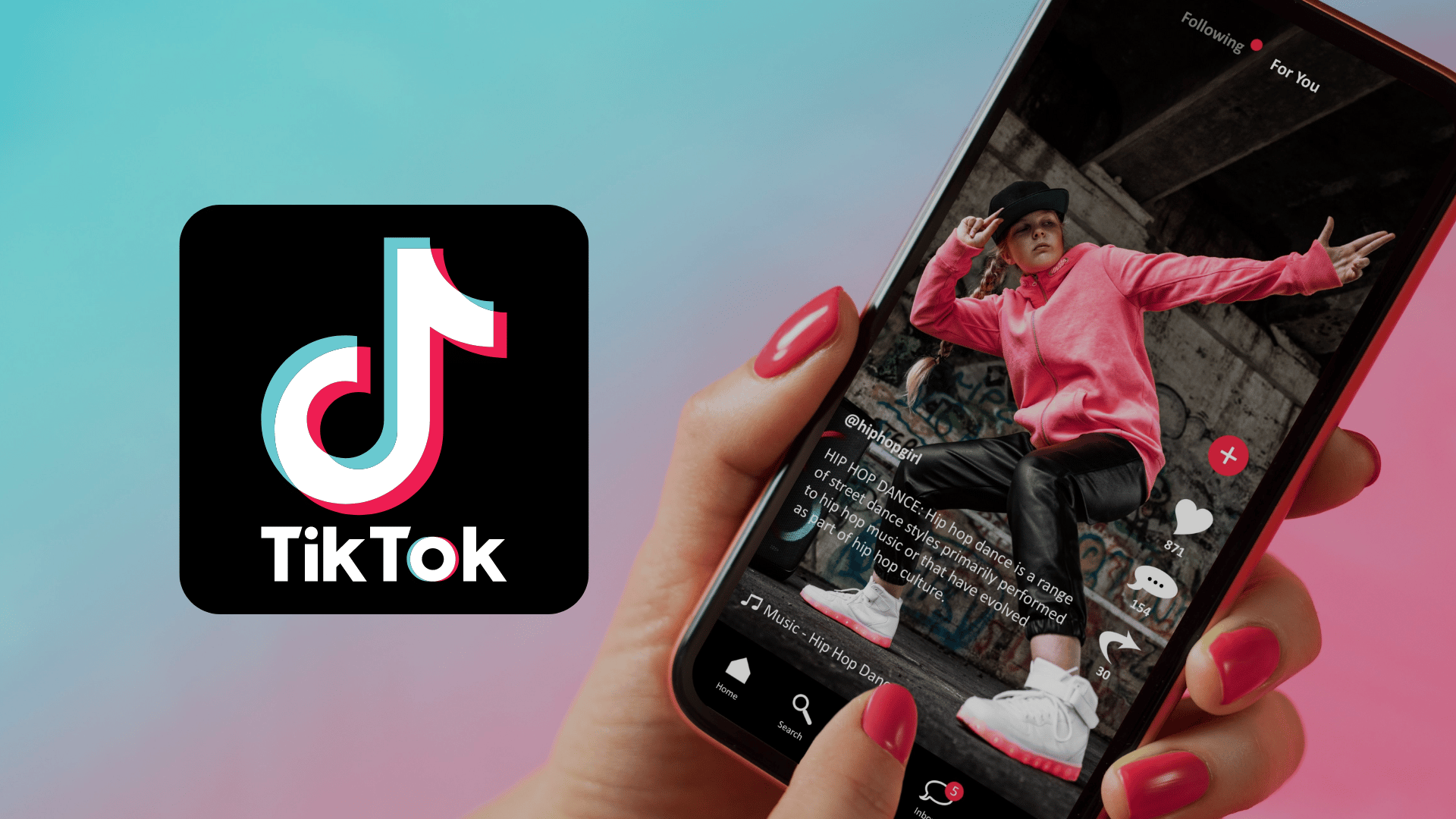
.png)